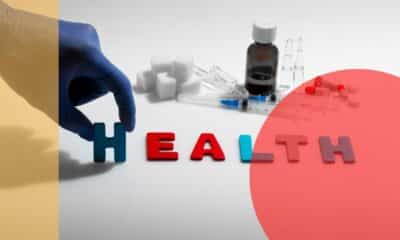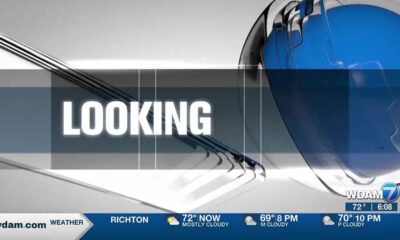Kaiser Health News
Millions Are Stuck in Dental Deserts, With No Access to Oral Health Care
by Lauren Peace, Tampa Bay Times
Mon, 01 May 2023 09:00:00 +0000
Every day, Adrienne Grimmett and her colleagues at Evara Health in the Tampa Bay area see stories of inequity in their patients' teeth, gums, and palates.
Marked in painful abscesses, dangerous infections, and missing molars are tales of unequal access to care.
All of these ailments — which keep patients out of work because of pain or social stigma, and children out of school because they can't concentrate with rotting roots — are preventable.
Annual dental checks are essential to overall health. But of the 67 counties in Florida, experts say, only one has enough dentists to treat all patients. Nine counties in Florida have fewer than three practicing dentists apiece. Lafayette County, in north Florida, doesn't have a single one.
“It's a social injustice,” said Grimmett, director of dental services at the not-for-profit, which serves Medicaid and uninsured patients in the Tampa Bay region.
“You will never be totally well if you don't have oral health,” she said.
In Florida and across the nation, vulnerable and marginalized communities — already prone to higher rates of chronic disease and limited access to health care — are left behind in these dental deserts. There, patient volume exceeds the capacity of providers, or too few dentists are willing to serve those on Medicaid or the uninsured.
Constricting the pool of dentists are low — or nonexistent — reimbursement rates for services paid through the state's Medicaid programs. Meanwhile, costly dental education can make dentists reluctant to work in more rural areas.
About 6 million Floridians live in dental deserts, according to data from the U.S. Department of Health and Human Services. That's the largest state population living without basic dental care in the U.S.
The consequences can be catastrophic, as people try to navigate a health system with few providers willing to serve them and costs that make services unattainable.
They're people like Mark Maggs, a 54-year-old Pinellas Park resident diagnosed with cancer last year. He delayed treatment because doctors said he needed to have teeth pulled first. His daughter started a GoFundMe to raise the $3,000 for the extractions.
They're people like Lisa Lambros, a 40-year-old New Port Richey resident who drives 90 minutes to Tampa for appointments at the county health department. She lost her teeth due to cancer three years ago and desperately needs dentures, but hasn't been able to afford them. She feels bad for her kids, embarrassed when they bring friends home to meet her.
“I had perfect teeth until I got sick,” Lambros said. “Now people treat me different. They look at me like I'm a bad person.”
Lambros and Maggs both live with daily pain that could be relieved with dental care.
Health equity advocates are fighting for long-term investments in oral health at the local, state, and federal levels to close gaps in care.
Where Are All the Dentists?
Poor dental access is not the result of too few dental school graduates.
Enrollment has been ticking up nationally, with more than 26,000 students in school last year. That's about a tenth the number of working dentists in the U.S., according to the American Dental Association.
But the majority of those graduates aren't practicing in underserved communities and don't accept uninsured patients or those enrolled in federal health insurance plans.
The issue is uneven distribution, said Joe Anne Hart, who's worked for the Florida Dental Association for nearly two decades.
Recruiting dentists to rural communities, where public infrastructure is typically worse, can be a challenge, Hart said.
And often, she added, there's a financial reason why dentists choose to practice in more affluent regions: student loan debt.
As of 2020, new graduates left dental school with an average debt of about $300,000, according to the American Dental Education Association.
With fewer patients in mostly poorer rural communities, graduates flock to private practices elsewhere, seeking financial stability. But it's not just rural residents who struggle to access care. Because Medicaid reimbursements for dental care are paltry, even in urban areas, most dentists opt not to serve Medicaid patients.
Nearly 8 in 10 Florida dentists reported they did not accept Medicaid patients, according to the most recent workforce survey from the state Department of Health. More than 70% of respondents cited low Medicaid reimbursement rates as the main reason why.
In Florida, fewer than 5% of dentists work in publicly funded dental offices and community clinics. The survey found the majority work in private practices.
“When you look at our dental Medicaid funding, we haven't had an increase since 2012,” said Christopher Bulnes, who practices in Hillsborough County. “We're at the bottom of the nation.”
In 2020, the Medicaid reimbursement rate for child dental services in Florida was just 42.6% of what private insurance reimbursed on average, according to the American Dental Association. That's one of the lowest reimbursement rates in the country. In Texas, for example, the rate is 70.3%. Arizona's reimbursement rate is nearly double that of Florida's.
For standard adult services, such as preventive cleanings and imaging, there is no benefit in the Sunshine State.
Kimme Heller is a 38-year-old St. Petersburg mom who lost her teeth after pregnancy as she battled infection after infection, a product of unlucky genetics and lack of access to preventive care. Her jawbone is so deteriorated from decay that her face is starting to change shape. It hurts to eat. She's been looking for a dental surgeon, but availability is limited. Even if she could get in, she couldn't afford the procedures.
“The rich get their smiles. The poor get disease,” she said.
Representatives of the Florida Dental Association said the state — which controls how much dental coverage is offered under Medicaid — should promote oral health care and increase coverage for vulnerable patients.
Additionally, the organization is lobbying for programs that would encourage dentists to care for underserved communities. One initiative they've floated would offer dentists up to $50,000 a year in student loan relief for efforts such as serving Medicaid patients or working in areas without enough providers.
As lawmakers convene in Tallahassee, the association has asked the state to set aside $1.8 million per year to support the Dental Student Loan Repayment Program. But with days to go, lawmakers have yet to act.
A Costly Toll
The percentage of adults and kids who have visited a dentist in the past year is lower in Florida than in any other state.
“We're talking about quality-of-life issues,” said Grimmett, of Evara Health. “Every day we see patients who weren't able to move forward with cancer treatment because they needed dental clearance and they weren't able to get it. We've seen patients who have been in pain for long periods of time who can't sleep or eat and need treatment. We see people without teeth who need dentures.”
Each year, more than $45 billion is lost from the U.S. economy — tallied in work missed and job opportunities lost — because of untreated oral disease, according to the U.S. Centers for Disease and Control and Prevention. Nearly 1 in 5 adults reported that oral disease affected their appearance and hampered their ability to get work. Some struggle to eat through the pain.
Children, meanwhile, miss class.
“I can't tell you how many times I've received calls from a parent or school nurse because a child cannot focus or learn because they are in pain,” said Jacinta Lamontagne, who serves Medicaid patients near Pensacola.
In 2020, fewer than half of people ages 1 through 20 on Medicaid received preventive dental care, such as an annual screening. In Florida, about 67% of kids on Medicaid went without.
Black and Hispanic children are more likely to have untreated oral illness.
For people 65 or older who use Medicare, dental care can also remain out of reach. Medicare does not cover standard services such as cleanings and fillings.
Frank Catalanotto is a founding member of Floridians for Dental Access and former dean of the University of Florida College of Dentistry. His organization is a partnership between nonprofits, individual dentists, and medical centers working to improve health access in the state.
He's motivated to close disparities — and not just those directly related to health. Oral pain can affect children's educational outcomes too.
“The literature now documents very clearly that if you are in pain, you're going to miss school more often than other kids, you're not going to learn as well,” Catalanotto said. “You're going to have social issues, because if you've got broken-down front teeth, kids are going to make fun of you.”
Catalanotto said there's also a financial toll. When people don't have access to local providers and are in pain, they often go to the emergency room.
In 2020, Florida hospitals billed roughly $330 million for more than 100,000 emergency room visits that stemmed from preventable oral health problems, according to analysis of hospital data by CareQuest Institute for Oral Health, a national nonprofit that focuses on health equity.
Much of that burden falls on taxpayers.
And while health care access is limited across medicine — not just in dentistry — Catalanotto stressed that teeth don't fix themselves.
Some minor ailments, such as colds and viral infections, can simply run their course. A minor dental ailment, he said, does no such thing.
Oral disease is progressive and ongoing and ultimately leads to severe infections.
Until more people have access to preventive care, the most vulnerable are going to continue to get unnecessarily sick.
“We have a crisis in Florida,” Catalanotto said. “That is abundantly clear.”
By: Lauren Peace, Tampa Bay TimesTitle: Millions Are Stuck in Dental Deserts, With No Access to Oral Health Care
Sourced From: kffhealthnews.org/news/article/dental-deserts-florida-access-to-oral-care/
Published Date: Mon, 01 May 2023 09:00:00 +0000
Did you miss our previous article…
https://www.biloxinewsevents.com/for-california-teen-coverage-of-early-psychosis-treatment-proved-a-lifesaver/
Kaiser Health News
Journalists Delve Into Climate Change, Medicaid ‘Unwinding,’ and the Gap in Mortality Rates
Sat, 04 May 2024 09:00:00 +0000
KFF Health News senior correspondent Samantha Young discussed Medicaid and climate change on KCBS Radio's “On-Demand” podcast on April 29.
- Click here to hear Young on KCBS
- Read Young's “AC, Power Banks, Mini Fridges: Oregon Equips Medicaid Patients for Climate Change“
KFF Health News contributor Andy Miller discussed Medicaid unwinding on WUGA's “The Georgia Health Report” on April 26.
- Click here to hear Miller on “The Georgia Health Report”
- Read Phil Galewitz' “Millions Were Booted From Medicaid. The Insurers That Run It Gained Medicaid Revenue Anyway.“
KFF Health News Nevada correspondent Jazmin Orozco Rodriguez discussed mortality rates in rural America on The Daily Yonder's “The Yonder Report” on April 24.
- Click here to hear Rodriguez on “The Yonder Report”
- Read Rodriguez' “City-Country Mortality Gap Widens Amid Persistent Holes in Rural Health Care Access”
——————————
Title: Journalists Delve Into Climate Change, Medicaid ‘Unwinding,' and the Gap in Mortality Rates
Sourced From: kffhealthnews.org/news/article/journalists-delve-into-climate-change-medicaid-unwinding-and-the-gap-in-mortality-rates/
Published Date: Sat, 04 May 2024 09:00:00 +0000
Did you miss our previous article…
https://www.biloxinewsevents.com/oh-dear-baby-gear-why-are-the-manuals-so-unclear/
Kaiser Health News
Oh, Dear! Baby Gear! Why Are the Manuals So Unclear?
Darius Tahir
Fri, 03 May 2024 09:00:00 +0000
Since becoming a father a few months ago, I've been nursing a grudge against something tiny, seemingly inconsequential, and often discarded: instructional manuals. Parenthood requires a lot of gadgetry to maintain a kid's health and welfare. Those gadgets require puzzling over booklets, decoding inscrutable pictographs, and wondering whether warnings can be safely ignored or are actually disclosing a hazard.
To give an example, my daughter, typically a cooing little marsupial, quickly discovered babyhood's superpower: Infants emerge from the womb with talon-strength fingernails. She wasn't afraid to use them, against either her parents or herself. So we purchased a pistachio-green, hand-held mani-pedi device.
That was the easy part. The difficulty came when we consulted the manual, a palm-sized, two-page document.
The wandlike tool is topped with a whirring disc. One can apparently adjust the speed of its rotation using a sliding toggle on the wand. But the product manual offered confusing advice: “Please do not use round center position grinding,” it said. Instead, “Please use the outer circle position to grinding.” It also proclaimed, “Stay away from children.” In finer print, the manual revealed the potential combination of kids and the device's smaller parts was the reason for concern.
One would hope for more clarity about a doodad that could inadvertently cause pain.
Later, I noticed another warning: “If you do not use this product for a long time, please remove the battery.” Was it dangerous? Or simply an unclear and unhelpful yet innocuous heads-up? We didn't know what to do with this information.
We now notice shoddy instructions everywhere.
One baby carrier insert told us to use the product for infants with “adequate” head, neck, and torso control — a vague phrase. (The manufacturer declined to comment.)
Another manual, this one online and for a car seat — a device that's supposed to protect your kid — informed readers with words and images that a model baby was “properly positioned” relative to the top of the headrest “structure” when more than one inch from the top. Just pixels away, the same model, slumped further down, was deemed improperly positioned: “The headrest should not be more than 1” from the top of her head,” it said, in tension with its earlier instructions. Which was it, more than one inch or not? So we fiddle and hope for the best.
I acknowledge this sounds like new-parent paranoia. But we're not entirely crazy: Manuals are important, and ones for baby products “are notoriously difficult to write,” Paul Ballard, the managing director of 3di Information Solutions, a technical writing firm, told me.
Deborah Girasek, a professor of social and behavior sciences at the Uniformed Services University of the Health Sciences, told me that for decades, for the young and middle-aged alike, unintentional injury has been the leading cause of death. That's drownings, fires, suffocation, car crashes. The USU is a federal service academy training medical students destined for the armed services or other parts of the government.
Some of these deaths are caused by lack of effective communication — that is, the failure of instruction about how to avoid injury.
And these problems stretch from cheap devices to the most sophisticated products of research and development.
It's a shortcoming that's prompted several regulatory agencies charged with keeping Americans healthy, including the Consumer Product Safety Commission, the Food and Drug Administration, and the National Highway Traffic Safety Administration, to prod companies into providing more helpful instructions.
By some lights, they've had success. NHTSA, for example, has employees who actually read manuals. The agency says about three-quarters of car seats' manuals rate four or five stars out of five, up from 38% in 2008. Then again, our car seat's has a five-star rating. But it turns out the agency doesn't evaluate online material.
Medical product manuals sometimes don't fare too well either. Raj Ratwani, director of MedStar Health's Human Factors program, told me that, for a class he teaches to nurses and doctors, he prompted students to evaluate the instructions for covid-19 tests. The results were poor. One time, instructions detailed two swabs. The kit had only one.
Technical writers I spoke with identified this kind of mistake as a symptom of cost cutting. Maybe a company creates one manual meant to cover a range of products. Maybe it puts together the manual at the last moment. Maybe it farms out the task to marketers, who don't necessarily think about how manuals need to evolve as the products do.
For some of these cost-cutting tactics, “the motivation for doing it can be cynical,” Ballard said.
Who knows.
Some corners of the technical writing world are gloomy. People worry their jobs aren't secure, that they're going to be replaced by someone overseas or artificial intelligence. Indeed, multiple people I spoke with said they'd heard about generative AI experiments in this area.
Even before AI has had its effect, the job market has weighed in. According to the federal government, the number of technical writers fell by a third from 2001, its recent peak, to 2023.
One solution for people like us — frustrated by inscrutable instructions — is to turn to another uncharted world: social media. YouTube, for instance, has helped us figure out a lot of the baby gadgets we have acquired. But those videos also are part of a wild West, where creators offer helpful tips on baby products then refer us to their other productions (read: ads) touting things like weight loss services. Everyone's got to make a living, of course; but I'd rather they not make a buck off viewers' postpartum anxiety.
It reminds me of an old insight that became a digital-age cliché: Information wants to be free. Everyone forgets the second half: Information also wants to be expensive. It's cheap to share information once produced, but producing that information is costly — and a process that can't easily or cheaply be replaced. Someone must pay. Instruction manuals are just another example.
——————————
By: Darius Tahir
Title: Oh, Dear! Baby Gear! Why Are the Manuals So Unclear?
Sourced From: kffhealthnews.org/news/article/baby-product-instruction-manuals-confusing-technical-writing/
Published Date: Fri, 03 May 2024 09:00:00 +0000
Kaiser Health News
California Floats Extending Health Insurance Subsidies to All Adult Immigrants
Jasmine Aguilera, El Tímpano
Fri, 03 May 2024 09:00:00 +0000
Marisol Pantoja Toribio found a lump in her breast in early January. Uninsured and living in California without legal status and without her family, the usually happy-go-lucky 43-year-old quickly realized how limited her options were.
“I said, ‘What am I going to do?'” she said in Spanish, quickly getting emotional. She immediately worried she might have cancer. “I went back and forth — I have [cancer], I don't have it, I have it, I don't have it.” And if she was sick, she added, she wouldn't be able to work or pay her rent. Without health insurance, Pantoja Toribio couldn't afford to find out if she had a serious condition.
Beginning this year, Medi-Cal, California's Medicaid program, expanded to include immigrants lacking legal residency, timing that could have worked out perfectly for Pantoja Toribio, who has lived in the Bay Area city of Brentwood for three years. But her application for Medi-Cal was quickly rejected: As a farmworker earning $16 an hour, her annual income of roughly $24,000 was too high to qualify for the program.
California is the first state to expand Medicaid to all qualifying adults regardless of immigration status, a move celebrated by health advocates and political leaders across the state. But many immigrants without permanent legal status, especially those who live in parts of California where the cost of living is highest, earn slightly too much money to qualify for Medi-Cal.
The state is footing the bill for the Medi-Cal expansion, but federal law bars those it calls “undocumented” from receiving insurance subsidies or other benefits from the Affordable Care Act, leaving many employed but without viable health insurance options.
Now, the same health advocates who fought for the Medi-Cal expansion say the next step in achieving health equity is expanding Covered California, the state's ACA marketplace, to all immigrant adults by passing AB 4.
“There are people in this state who work and are the backbone of so many sectors of our economy and contribute their labor and even taxes … but they are locked out of our social safety net,” said Sarah Dar, policy director at the California Immigrant Policy Center, one of two organizations sponsoring the bill, dubbed #Health4All.
To qualify for Medi-Cal, an individual cannot earn more than 138% of the federal poverty level, which currently amounts to nearly $21,000 a year for a single person. A family of three would need to earn less than $35,632 a year.
For people above those thresholds, the Covered California marketplace offers various health plans, often with federal and state subsidies, yielding premiums as low as $10 a month. The hope is to create what advocates call a “mirror marketplace” on the Covered California website so that immigrants regardless of status can be offered the same health plans that would be subsidized only by the state.
Despite a Democratic supermajority in the legislature, the bill might struggle to pass, with the state facing a projected budget deficit for next year of anywhere from $38 billion to $73 billion. Gov. Gavin Newsom and legislative leaders announced a $17 billion package to start reducing the gap, but significant spending cuts appear inevitable.
It's not clear how much it would cost to extend Covered California to all immigrants, according to Assembly member Joaquin Arambula, the Fresno Democrat who introduced the bill.
The immigrant policy center estimates that setting up the marketplace would cost at least $15 million. If the bill passes, sponsors would then need to secure funding for the subsidies, which could run into the billions of dollars annually.
“It is a tough time to be asking for new expenditures,” Dar said. “The mirror marketplace startup cost is a relatively very low number. So we're hopeful that it's still within the realm of possibility.”
Arambula said he's optimistic the state will continue to lead in improving access to health care for immigrants who lack legal residency.
“I believe we will continue to stand up, as we are working to make this a California for all,” he said.
The bill passed the Assembly last July on a 64-9 vote and now awaits action by the Senate Appropriations Committee, Arambula's office said.
An estimated 520,000 people in California would qualify for a Covered California plan if not for their lack of legal status, according to the labor research center at the University of California-Berkeley. Pantoja Toribio, who emigrated alone from Mexico after leaving an abusive relationship, said she was lucky. She learned about alternative health care options when she made her weekly visit to a food pantry at Hijas del Campo, a Contra Costa County farmworker advocacy organization, where they told her she might qualify for a plan for low-income people through Kaiser Permanente.
Pantoja Toribio applied just before open enrollment closed at the end of January. Through the plan, she learned that the lump in her breast was not cancerous.
“God heard me,” she said. “Thank God.”
This article was produced by KFF Health News, which publishes California Healthline, an editorially independent service of the California Health Care Foundation.
——————————
By: Jasmine Aguilera, El Tímpano
Title: California Floats Extending Health Insurance Subsidies to All Adult Immigrants
Sourced From: kffhealthnews.org/news/article/california-legislation-medicaid-subsidies-all-adult-immigrants/
Published Date: Fri, 03 May 2024 09:00:00 +0000
Did you miss our previous article…
https://www.biloxinewsevents.com/bird-flu-is-bad-for-poultry-and-dairy-cows-its-not-a-dire-threat-for-most-of-us-yet/
-
Mississippi Today6 days ago
On this day in 1951
-
SuperTalk FM2 days ago
Driver’s education set to become mandatory in Mississippi as bill passes
-
SuperTalk FM5 days ago
Festival merger in Leland sets up one major event for Mississippi Delta
-
Mississippi News7 days ago
One injured in Mississippi officer-involved shooting after chase
-
Mississippi Business3 days ago
Geartek expanding operations in Alcorn County
-
SuperTalk FM5 days ago
PERS bill set to phase in employer rate increase heads to governor’s desk
-
Mississippi News4 days ago
Two women accused of shoplifting across southeast captured in Mississippi
-
SuperTalk FM15 hours ago
State approves $160M to expand Highway 7 to four lanes in Lafayette County




































